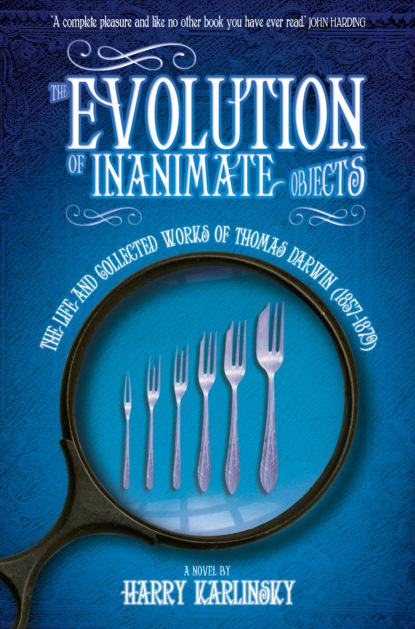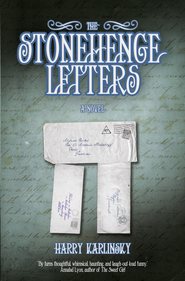По всем вопросам обращайтесь на: info@litportal.ru
(©) 2003-2024.
✖
The Evolution of Inanimate Objects: The Life and Collected Works of Thomas Darwin
Автор
Год написания книги
2019
Настройки чтения
Размер шрифта
Высота строк
Поля
Drawing by Catherine MacDonald.
The published report indicated the coins were found in Keston Common, a lowland heath located about two miles from Down House. This setting was to take on a more ominous connotation for Thomas just a few months later. Some years before, his father had been prescribed horseback riding for therapeutic purposes and had found the grasslands and fields of the nearby common a convenient place to ride. Although his ill health persisted, Charles enjoyed the exercise until one day in early April, 1869, when his “quiet cob Tommy stumbled and fell, rolling on him and bruising him seriously.” Thomas witnessed the misadventure and was traumatized. Shaken, he retreated into his bedroom for a number of days, consoling himself with repeated games of shadow puppets. Thereafter, he had an aversion to horses and experienced significant anxiety in their presence. Although Charles Darwin never raised the matter with either Emma or Thomas, he was privately convinced the earlier rocking horse incident was responsible for his son’s brief, but otherwise puzzling, regression.
When not working or in school, Thomas’s adolescence was also characterized by the social milestones and activities of a large Victorian family. The happier occasions included the marriages of three siblings: Henrietta Emma to Richard Buckley Litchfield in 1871; Francis to Amy Richenda Ruck in 1874; and William Erasmus to Sara Sedgwick in 1877.
In 1876, the birth of Thomas’s first nephew (Bernard) was followed by the tragic loss of Bernard’s young mother who, just one week later, died of puerperal fever. Afterwards, Thomas’s widowed brother Francis returned to Down House with his young son. Although the baby was a great joy to the entire household, Bernard had a particular affinity for Thomas, an affection that was shared. Together, they would search for gooseberries in the woods surrounding Down House so that Grandmamma Emma could make her much-loved gooseberry cream. Thomas would also spend long hours gently pushing Bernard on the swing that Thomas’s Uncle Erasmus (known as Uncle Ras) had suspended between two yew trees years before.
Figure 4. Charles Darwin on His Horse Tommy.
CUL location-MS. DAR.225:116. Reproduced by kind permission of the Syndics of Cambridge University Library.
One favourite family anecdote concerning Thomas and Bernard involved a secret potion. Charles had once taken pleasure in astounding a very young Thomas with variously dyed polyanthuses and primroses that he produced by watering the plants with coloured fluids. It became Uncle Thomas’s responsibility to educate his nephew in similar manner. A triumphant Bernard was then allowed to present these alchemic concoctions to his father Francis and to Grandmamma and Grandpapa. Even Charles Darwin feigned amazement and would beg to learn from a pleased and proud Bernard how such transformations had been achieved.
Thomas and Bernard’s mutual joy was Polly, a rough white terrier and cherished Darwin family pet. Generally docile and content to remain indoors, Polly would sit serenely for hours, staring out the drawing-room window. On sighting Thomas and Bernard in the gardens, however, she would madly bark and race around the drawing-room, mollified only on reuniting with her glimpsed masters. Such enthusiasm was deemed worthy of description by Charles Darwin, and Polly’s contortions are reported in much greater detail under the heading of “Exuberance” in the second edition of Expression of the Emotions, published posthumously in 1890.
Throughout Thomas’s youth, the Darwins occasionally undertook brief family holidays, in Emma’s hope that a change of scenery would improve her husband’s frail health. Journeys of note involving Thomas included a trip to Torquay in June and July of 1861; a house in Malvern Wells in the autumn of 1863; six weeks in Dimbola Lodge, Isle of Wight, during the summer of 1868; and time spent in Caerdeon, in North Wales, in the summer of 1869. In 1872, Thomas travelled independently to Staffordshire where he summered with his Wedgwood relations. There, he worked during the day at the Etruria Works Pottery, founded by his maternal great-grandfather Josiah Wedgwood I. It was then common for boys his age to carry moulds from the potters to the stoves — tedious and dangerous employment. Other risks also had to be considered. Emma, for one, was extremely concerned that Thomas, only fifteen, might be prematurely attracted to one of many first cousins he met during this visit. By her count, there were already four first cousin marriages involving the Darwin and Wedgwood families, including Emma’s own marriage to Charles. As Emma confided to her Aunt Fanny Allen, “There is such a strong inclination on both sides of Thomas’s family to marry first cousins.”
Emma suspected that Thomas’s affections would be most vulnerable while attending the large family dances held at Maer Hall, the Wedgwood’s country home. Thankfully, at least from Emma’s perspective, Thomas had once attended a dancing class with his sisters Henrietta and Elizabeth. Just seven, and the only boy, Thomas had been forced to wear baggy velvet knickerbockers that ended above his knees. After class, Emma found him sobbing outside on the curb-stone. The unpleasant association remained with Thomas and it was a relieved Emma who wrote to Aunt Fanny that, “Thomas, having never taken to dancing, has resisted all overtures to join his cousins on the dance floor. Hurrah, hurrah!”
Figure 5. Etruria Works
on the Trent and Mersey Canal. Photo taken in 1898 by one of the employees. Accessed from the “Home of the North Staffordshire Potteries” website, maintained by Steven Birks. Copyright holder unknown.
Charles was also worried that Thomas might be captivated by a first cousin, but not because Thomas was too young. Based on his readings and his botanical experiments, Charles had become aware that in-bred plants frequently perished or otherwise fared poorly when forced to compete with other plants. Fearing that the ill effects of inbreeding also applied to other species, and that his and Emma’s children were thereby at-risk, Charles lobbied to have the Census Act of 1871 address the prevalence of cousin marriages. After this effort proved unsuccessful, Charles then encouraged his son George to statistically examine whether concerns about cousin marriages were justified.
Вы ознакомились с фрагментом книги.
Приобретайте полный текст книги у нашего партнера:
Приобретайте полный текст книги у нашего партнера:






